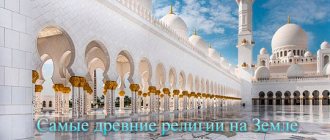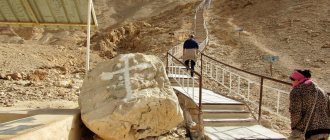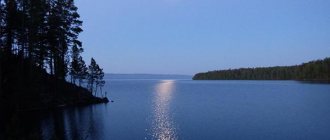Modern apostolic Christianity has placed hell on earth not on the surface, but underground. At what depth it is located is not specified. The description of hell underground is strikingly different in the Bible and in Dante’s 9 circles from his “Divine Comedy”. If Date, the depiction of sinners in hell gives goosebumps. There are no terrible, heartbreaking scenes in the Bible. But it makes it clear what people who have been in hell feel. Terrible inhuman torment. But rather not of a physical, but of a spiritual nature.
Description of Hell in the Bible
The meaning of the word hell is the invisible. This is how the word aedos is translated from Greek. The Bible describes hell as an invisible underground region where sinners are tormented and where the Lord descends. According to church tradition, the souls of the dead, from the 9th to the 40th day, become acquainted with the order that reigns here. A person is made to understand what the sin he commits leads to. And how you will have to answer for him, appearing in court before the Almighty.
The first description of hell in the Bible is found in the prophet Isaiah: “Hell hell began to move for you... and you became powerless, like us! and you have become like us! Your pride with all your noise has been cast into the pit; a worm lies beneath you, and worms are your covering... you are cast into hell, into the depths of the underworld... All the kings of the nations, all lie with honor, each in his own tomb; and you are cast down outside your tomb, like a despised branch, like the clothing of those killed, struck down by the sword, who are lowered into stone ditches - you, like a trampled corpse, will not be united with them in the grave; for you have destroyed your land, you have killed your people: the tribe of evildoers will never be remembered.” (Isa. 14:9-20).
In this biblical passage, hell does not look like a place of torment for sinners. But rather, it looks like an abandoned warehouse for old, unnecessary rags. Only instead of rags, dead people are in hell. Remember this point, it is important for our further conversation.
The imprisonment of the soul of a sinner in the underworld is described at length in the Bible by the prophet Ezekiel. Here is a characteristic image of hell, as imagined by the prophet:
“There is Assur and all his hordes, around him are their graves, all slain, fallen by the sword. His tombs are placed in the very depths of the underworld, and his horde is around his tomb, all slain, fallen by the sword, those who spread terror in the land of the living.”
The future of the Danakil Depression
"data-layzr="https://natworld.info/wp-content/uploads/2018/01/lava.jpg" alt="" width="500″ height="333″ data-layzr-srcset="https ://natworld.info/wp-content/uploads/2018/01/lava.jpg 500w, https://natworld.info/wp-content/uploads/2018/01/lava-300×200.jpg 300w" sizes ="(max-width: 500px) 100vw, 500px" />
As the tectonic plates underlying the trench continue their slow movement (about three millimeters per year), the land will continue to sink further below sea level. Volcanic activity will continue as the rift created by the moving plates expands.
In a few million years, the Red Sea will flow into the area, expanding it and possibly forming a new ocean. Currently, Danakil attracts scientists to study the types of life that exist in this region. Residents continue to mine salt. Astronomers are also interested in the geology and life forms of the area because they may hold clues to whether similar regions in other parts of the solar system can also support life. There is even a tourist destination in Danakil that attracts the hardiest travelers to visit this “hell on Earth”.
Located in the Afar region of northern Ethiopia, the Danakil Depression is a hellish place with very high temperatures and unusual landforms. "The Cruelest Place on Earth" is intended only for those with an adventurous nature, a strong, resilient body and mind.
Best articles: A dog is the best trainer for a person
The Danakil Depression is part of the Afar Triangle, which can be found in Ethiopia, near the border of Eritrea and Djibouti. It is part of a geological valley located in the Horn of Africa. The Danakil Depression was formed due to the activity of three tectonic plates in the region.
Lying 100 meters below sea level, this area holds the record for the highest average temperature on the planet - about 35 degrees Celsius. But in fact, on hot days, the temperature reaches 60 degrees!
The Trench is one of the most inhospitable places on Earth, with endless stretches of salt marshes, scorching sands, stinking sulfur and active volcanoes.
Despite the terrible climatic conditions, a tribe of people known as the Afar call this place home. They are famous for being inhospitable to outsiders. Before World War II, they attacked and castrated foreigners. Although conditions are much safer now, visitors who want to explore the site safely will still need to hire armed militia.
The Afar people survive by extracting salt from the desert in the scorching heat, and sell it in nearby towns.
For a first time visitor, nothing can prepare you for the view of the Erta Ale volcano, especially at night. A large lake of moving hot lava that sparks and bubbles, sometimes spewing small splashes at the rim of the crater. This is the pearl of Danakil. The heat here is so intense that most travelers who stand close to the crater slowly melt their soles.
Not far from Erta Ale, you can see one of the most alien sights that our planet has to offer. A huge area consisting of green and yellow pools of hydrothermal waters, sometimes with orange and red colors. These pools are part of the Dallol volcano crater.
Animals and plants are very rare in this place. In addition to camels, wild asses, antelopes, small birds, lizards and insects can sometimes be spotted. Most of these creatures survive thanks to the thorny bushes that are scattered throughout the desert.
It is possible to reach Danakil from the nearby city of Mekele, which is accessible by air using Ethiopian Airlines. In Mekele, travel agents can arrange travel to Danakil, including 4WD vehicles and safety. Some Afars can provide accommodation in their traditional huts through negotiations with travel agents.
Danakil Depression: interesting fact.
The famous 3.2 million-year-old hominid fossil "Lucy" (Australopithecus afarensis) was found here, making Danakil famous in the scientific community of archaeologists and paleontologists.
Description of hell by prophets and apostles
In hell there is despondency, rottenness and worms. And around sinners there is only a black abyss and darkness. “Before I depart, and never return, into the land of darkness and the shadow of death, into the land of darkness, which is the darkness of the shadow of death, where there is no structure, [where] it is dark as darkness itself” (Job 10:21-22 ).
The depressing impression of the description of hell in the Bible remains from the words of the suffering righteous Job:
“Why didn’t I die when I came out of the womb, and why didn’t I die when I came out of the womb? Why did my knees accept me? Why did I have to suck nipples? Now I would lie down and rest; I would sleep, and I would be at peace with the kings and advisers of the earth, who built deserts for themselves, or with the princes who had gold, and who filled their houses with silver; or, like a hidden miscarriage, I would not exist, like babies who have not seen the light.” (Job 3:11-19).
The sinful soul regrets its appearance in this world. The torment of hell underground is so heavy and unbearable for her.
The hottest place on Earth: the Danakil Depression
The Danakil Depression is located in the northern part of the Afar Basin on the border of Ethiopia and Eritrea, being part of the desert of the same name. This is the hottest place on Earth and one of the lowest places on the planet.
Volcanoes, geysers, acid pools, huge salt fields and colorful mineral lakes are all on today's journey.
1. Ertale volcano crater in the Danakil Desert. This is one of the five known volcanoes in the world that have a lava lake, and also the only volcano in the world that has two lava lakes at once, which makes it truly unique. (Photo by Mike Korostelev):
2. Colorful hot spring. In general, everything here looks more like landscapes from another planet. (Photo by Wuthrich Didier):
3. Salt marsh and salt production. (Photo by Carl Court):
4. Salt mountains of Dallol volcano in Ethiopia. (Photo by Fredy Thuerig):
5. The huge salt lake Karum (or Assal) lies in the northern part of the Danakil Desert at 115 meters below sea level. (Photo by Rweisswald):
6. The Danakil Depression is the hottest place on Earth, if you consider not “record high” temperatures, but “average high” temperatures throughout the year. The maximum temperature (not in the shade) is 63°C, during the summer the temperature never drops below 40°C, during the year - below 34°C. (Photo by Eric Lafforgue):
7. Colorful formations near a small geyser. (Photo by Tanguy de Saint-Cyr):
8. The surroundings of Lake Dallol and its sulfur springs. (Photo by Einat Klein Photography):
9. Sulfur Lake in the Danakil Depression. (Photo by Carl Court):
10. Ertale Volcano is located in the Danakil Desert; it lies below sea level and is part of the so-called “Afar Triangle” - a zone of strong volcanic activity. Ertale is a basalt shield volcano with a lava lake in the crater. (Photo by Harri Jarvelainen Photography):
11. Lava. (Photo by Anastasia Koro):
12. Lava formations in the secondary crater of the Ertale volcano. (Photo by Ji-Elle):
13. Mineral deposits near the Dallol volcano. (Photo by Mikluha Maklai):
14. Sulfur deposits in the Danakil depression. (Photo by Carl Court):
15. Salt. Lots of salt. (Photo by Carl Court):
16. Salt is taken out from here in caravans. (Photo by Zacharias Abubeker):
17. The Danakil Depression is one of the lowest places on the planet: it is located 125 meters below sea level and ranks third on the list of the lowest places in Africa, second only to Lake Assal (-153 meters) and the Qattara Depression (-133 meters). (Photo by Carl Court):
18. There are isolated semi-abandoned settlements here, for example, Dallol. (Photo by Carl Court):
19. Caravan of camels with salt. (Photo by Siegfried Modola):
20. Hot springs in the Danakil depression. (Photo by Eric Lafforgue):
Satan rules in hell underground
People in hell fall under the complete power of Satan. He is the rightful all-powerful master here. He believed so much in his power that even the descent of Christ into the underworld at first did not frighten him at all. Satan even rejoices at the approaching Christ. But he sees Him in a bright Light and begins to panic. He demands that his minions close the door on Jesus Christ.
“God is light, and in Him there is no darkness at all” (1 John 1:5). When Light, that is, God, penetrates hell, then darkness dissipates. She is powerless against the light. As a place of darkness, hell is destroyed and disappears with the descent of Christ there. Hence the biblical essence of hell is obvious - it is in the ignorance of some sinners and in the failure of others to see God.
“So it will be at the end of the age: Angels will come out and separate the wicked from among the righteous and throw them into the fiery furnace: there will be weeping and gnashing of teeth.” (Gospel of Matthew 13:47-50). This Bible is already about what will happen after hell.
Water
Some waters are more dangerous than others due to unique geographic features that increase their strength. The Salstraumen Strait in Norway has earned a fearsome reputation for having the strongest currents on Earth. However, this home to the world's most powerful whirlpool is now so well understood that tourists navigate it in an inflatable boat with a knowledgeable skipper.
Probably, water has to be taken into account to a greater extent on land. For those living on the coast, seawater flooding poses a particular danger. The Maldives, a group of low-lying islands and atolls in the Indian Ocean, are also called "ephemeral islands" due to their vulnerability to rising sea levels. The risk increases every year as our climate continues to change.
The peak danger occurs when water levels suddenly rise, such as during a tsunami or storm surge.
Tsunami mitigation and warning systems exist around the world to protect people from these life-threatening events. But in some places the warning time is reduced to 20 minutes, so tsunamis can claim many lives. In 2004, the deadliest tsunami in recent history occurred, killing 280,000 people in 15 countries, following an earthquake off the coast of Sumatra in Indonesia. This sacrifice to the sea is difficult to comprehend. However, river floods claimed even more lives.
The summer flood of the Yangtze River in China in 1931 is estimated to have killed millions of people, although the toll is greatly underestimated in official records. Heavy snowfall that year was followed by heavy thawing and abnormally heavy rainfall, resulting in what was probably the worst natural disaster in the history of civilization.
Best articles: What to feed an elderly cat
Today, literally billions of people live on the banks of China's largest rivers, and flooding associated with possible climate change is keeping them up at night.
Hell underground as described by the Commissioner of Qatar
The description of hell and the suffering of sinners underground in the Bible and in Dante's Divine Comedy is more related to artistic fiction. We can accept the image of hell on faith or reject it. We will not find any confirmation of these words about hell on earth.
Old Believer scribe Commissioner Qatar offers a different approach to understanding the essence of hell and its functions in the universe. His approach to the problem of those in hell cannot be called purely scientific. Rather, it is ideological and relies on deep knowledge of the laws of our world.
Bohumil Qatar also believes that hell is underground. But it is not people who go to hell after death, nor their souls.
“The soul is not just a part of God, but his Holy Spirit, that is, that which can never be stained under any circumstances, because it is pure by nature. Sent by the breath of God, she returns to him in any case. Only one is confident of a new incarnation in a new world, and the second is guilty of not being able to keep her incarnation from the temptations of earthly existence,” says the bookish man.
But if it is not a soul or a person who goes to hell underground for earthly sins, then who or what? Listen.
Movement of subtle bodies between subtle zones of the Universe after death
In the afterlife, the subtle body is sent to that plane of existence that corresponds to its basic nature in terms of Sattva, Raja Tama. This is also a function of a person's spiritual level. Consequently, subtle bodies from the lower positive subtle areas in the afterlife cannot move to the higher positive subtle areas, and bodies from the first or second negative zone cannot move to the deeper zones of Hell. This can be compared to how people living on the plains have difficulty breathing in the mountains, but people living at high altitudes cope with it just fine.
Qatar about those who went to hell
A person is a kind of vessel. And in the Bible, and in the Holy Scriptures, and in the Koran, and in the Torah, and other books, this is stated many times. This is how it really is. After all, the human body is 71% water. And what is especially noteworthy is that we contain 2% fresh water. Exactly as much as on the globe. And other proportions of chemical elements in our body coincide with the proportions of the Earth. Such a coincidence “in the image and likeness.”
Water on earth and in our body has the same functions. She not only gives water and washes, giving life. Water is also a storehouse and carrier of all the information that exists about each person and all of humanity as a whole.
“Man naively believes that God is watching him through some kind of microscope,” writes Commissioner Qatar. – Daily fluid secretions from the body, in essence, are the replenishment of each person’s memory cells with new information that exists among many others. The physical and chemical processes occurring in the body are recorded on the fluid leaving the body, and rest assured, it will go where it needs to go.”
Now imagine a sinner whose water carries negative information about a person. She ends up in an underground area, which in the Bible is presented as purgatory. But sin is different from sin, isn’t this where Dante’s 9 circles of hell come from? Some waters can be purified and return to the surface of the earth in the form of springs and other sources. And others are so dirty that even the earth is unable to cleanse them of filth.
Purified water necessarily carries a marker of repentance. It testifies that the person from whom the water has left realized his guilt, sincerely repented, and the earth accepted his repentance. What happens to dirty water that cannot be purified? And there is only one road prepared for her - to HELL.
For what reason does hell exist if God is Love?
Many believers prefer to think of their relationship with God in terms of reward and punishment and agree that God can condemn a person to eternal destruction for not loving Him.
Without going into too much detail, let’s take a critical look at the above. After all, what is hell? Literally translated from Greek, it is a place devoid of light, that is, God, since Light is one of His most common names.
Thus, hell is nothing more than a state of abandonment by God, alienation of a creature from its Creator.
The distinctive property of love is the desire for unity, the reunification of what is divided.
The inheritance of the Kingdom of Heaven, understood as overcoming spiritual death, i.e. decay and loneliness, is found by us in the desire for God, Who is this all-uniting Power.
Therefore, salvation itself in patristic thought is associated rather with the restoration of a person to his original dignity, his recovery, rather than with deliverance from condemnation, i.e. the very “sent to hell” that the slogan in the title of our conversation refers to.
To be saved means to be together with God, and hell is so terrible precisely because it is as far away from Him as possible.
So how can we explain the popularity of the opposite, seemingly deliberately distorted model of the relationship between God and man? It is likely that such an understanding to some extent corresponds to the religious expectations of the majority of believers, who need a set of very specific things from God, among them invariably: health, success, well-being, posthumous guarantees, etc.
The slogan “Love me, or I will send you to hell” suggests a linear logic of salvation, a kind of contract, by observing the terms of which, a person receives guarantees of his posthumous well-being.
The goal of religious activity in this case is not union with God, but the acquisition of this well-being, understood in a “spiritual” key.
This is associated with the desire to protect ourselves from God, to protect ourselves from His interference in our lives, since God always wants from a person what the person himself does not need. It’s as if each of us owes Him something. And the “love” that a person squeezes out of himself is a kind of tax, payment for those guarantees without which he cannot overcome anxiety and fear of death.
The agreement establishes a certain mechanism of salvation, which for many is preferable to personal relationships, since “it is scary to fall into the hands of God Zhivago.” It is easier to be saved by the law than by faith and freedom in Christ.
What's going on in hell underground
Now remember the description of hell in the Bible that you focused on. There, Satan’s underground fiefdom is presented as a kind of storage facility. And the torment in hell is not physical, say representatives of many beliefs. This is understandable, there is no physical body - there is no pain.
The suffering of sinners is most likely moral. You've probably had agonizing nights. When there is no pain, but the whole body feels like someone is turning it inside out. Every bone, every vein. Perhaps these sensations have something in common with the torment of sinners in hell.
This is how Qatar sees the torment of hell:
“What is going on in hell? Water, like some kind of informational and virus-infected substance, is torn away from the main volume of memory and is pushed out by forces unknown to me deep into the planet, where the Apostolic Christians placed hell. There it is subjected, under the influence of many complex processes, not to purification (this is no longer possible) but to storage in quarantine, constantly being exposed to new influences.”
Starover Bogumil Qatar compares this process to the localization of a computer virus. “Sinful water,” like the virus, wants to expand the space of its presence. But it was not there. "Earth Antivirus" works without flaws. It strictly localizes dirty water and pushes it deeper and deeper underground. She will stay there forever. It carries information about mortal sins and is dangerous, I think, even contagious for living people.
Formation
» data-layzr=»https://natworld.info/wp-content/uploads/2018/01/formirovanie-danakil.jpg» alt=»» width=»500″ height=»310″ data-layzr-srcset= »https://natworld.info/wp-content/uploads/2018/01/formirovanie-danakil.jpg 500w, https://natworld.info/wp-content/uploads/2018/01/formirovanie-danakil-300× 186.jpg 300w" sizes="(max-width: 500px) 100vw, 500px" />
This region of Africa extends over an area of 40 by 10 kilometers, and is also bordered by mountains and a high plateau. The Danakil Depression was formed at the junction of three tectonic plates underlying Africa and Asia, which began to move apart millions of years ago. The region was once covered by oceanic waters, leaving behind thick layers of sedimentary rock and limestone. Then, as the plates moved further apart, a rift valley formed with a depression inside. The surface is currently subsiding as the old African plate gradually breaks apart into the Nubian and Somali plates.
Hell is underground, and the soul is next to God
The soul from which this dirty water is washed off remains with God, as mentioned above. But she is missing one of the parts of the Trinity of God's creation, under the name man. I think this is a very depressing incompleteness. Imagine that you exist and at the same time you don’t feel a third of yourself. Such a soul is also in quarantine, as it were, and is not capable of reincarnation. It turns out that the soul did not die, but the sinful person in it died.
And only the descent into hell of Christ will become for such souls a moment of rebirth. Light will conquer darkness. All negative information over which Satan languishes in his hellish dungeon will be erased. This concludes the description of hell on earth and underground.
Ivan Ivanovich A.
Heaven on earth and in heaven
The essence and meaning of human life on earth
The essence of Satan, what Satan really is
Aborigines
The Afar tribe has inhabited this barren land for centuries, making a living by extracting salt from the mineral lakes that dot the Danakil and transporting it across the desert in camel caravans. Like the Kurds, they inhabit areas spanning several countries but have no political rights or borders to call their own.
Although these are the most common nomadic herders, they are famous for their fierce, proud, independent disposition. No one will say that they are very hospitable towards neighboring tribes, tourists, and especially foreign soldiers. Perhaps these people are a mirror image of the harsh terrain that surrounds them. Before the Italian occupation during World War II, they were known for their practices, which were uncivilized by civilized people. It was customary for them to castrate foreigners and carry their cut off genitals with them as a talisman. In general, a young Afar could be considered a man only after committing the first murder.
By the way, modern Afars can also sometimes pose a danger to tourists. Several years ago, the Ethiopian police had to rescue a group of foreigners who were captured by the nomads of the Danakil desert. Although now people are afraid to kill and kidnap people with impunity. But on blogs you can often read travelers’ impressions of these people. Many people write that a car could easily be stoned, and along the roads there are peaceful shepherds with machine guns in their hands.
Poisonous desert
First of all, this is the lava lake Erta Ale, the lava of which does not solidify, but bubbles and splashes out to the surface. Eyewitnesses claim that watching this devilish spectacle is incredibly interesting.
Lake Assale, located in the desert, is the saltiest body of water in the world, and unusually shaped salt crystals cover its shores. Often, travelers tear off pieces of salt formations as a keepsake of this amazing place.
Another attraction of the desert is the Dallol volcano, which occupies the lowest point in the country. The volcano is low and has a salt dome, and its surface is painted with rich color combinations in incredible shades of green and yellow, due to the release of toxic gas and boiling sulfuric acid. The surface of the unique acid pond is decorated with salt terraces and unusual intricate patterns of salt formations.
The desert is inhabited by two competing tribes. Each community believes that they are the true owners of Danakil and therefore conflicts occur between them from time to time.
Danakil is a unique place, impressive with its extraordinary, alien beauty. A traveler, seeing such a surreal picture, involuntarily looks around in the hope of seeing a film crew, perceiving the surroundings as the scenery for a film. A truly fantastic sight.
Main fishery
Mining and trading salt is labor-intensive, using a simple pickaxe and axe. Hired workers have to cut and cut bricks from salt in extreme heat for a pittance. They work in groups. The caravan consists of 15 to 20 dromedaries, each loaded with 30 salt bricks weighing 4 kg each. You have to walk 80 km through the desert to the small village of Berakhil and back, which takes from two to three days in each direction. The team earns around 3,320 Ethiopian birr (£112) per crossing, but most of this goes to the camel owner and for food for the animals, with the transporters receiving a pittance.
The salt is then loaded onto other camels, which are used to transport the salt to Mekele, the provincial capital, and further west to the rest of Ethiopia and the Horn of Africa. However, in recent decades everything has changed, there is an asphalt road, and now trucks can pick up cargo directly from Berahil.









